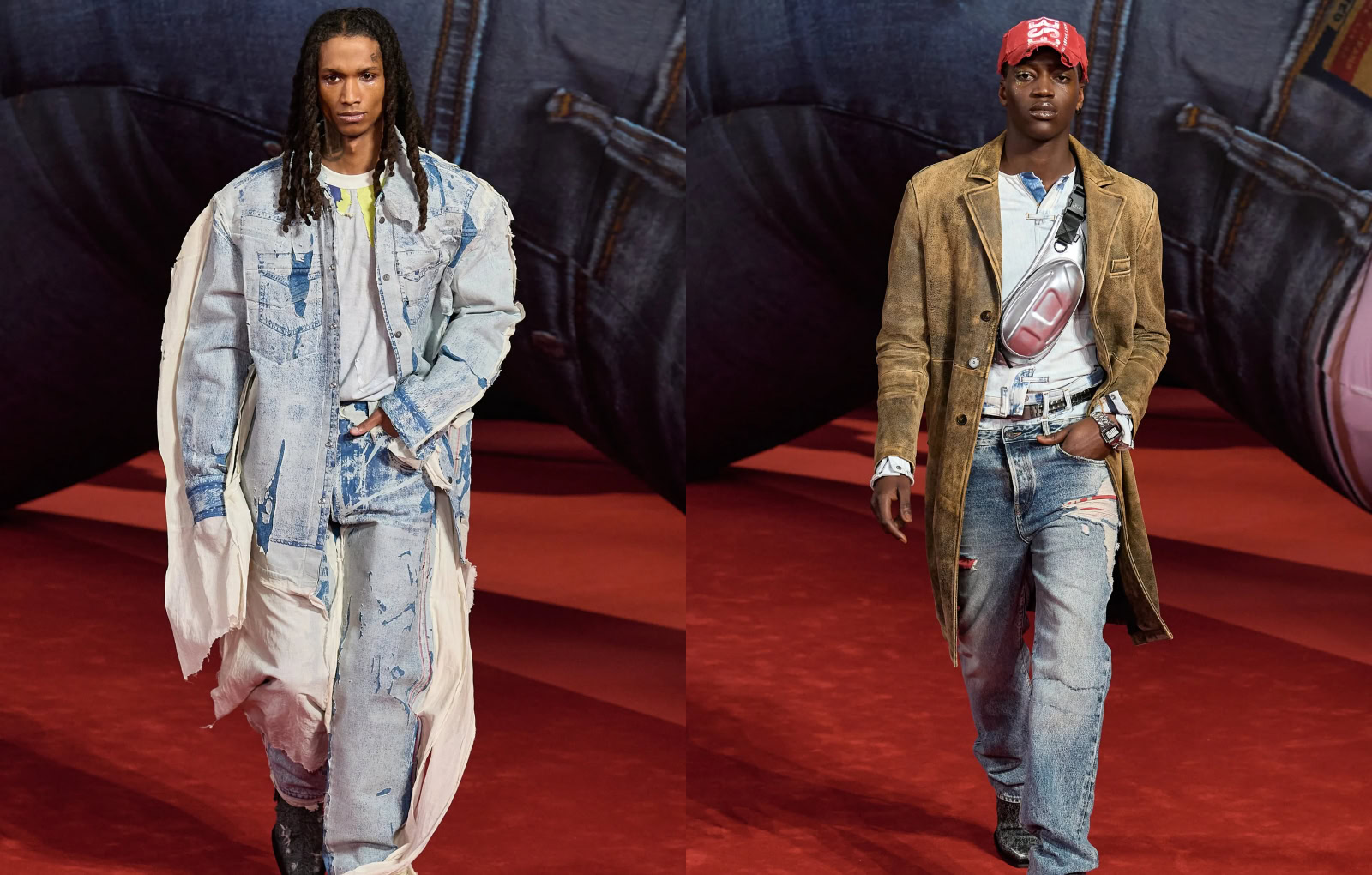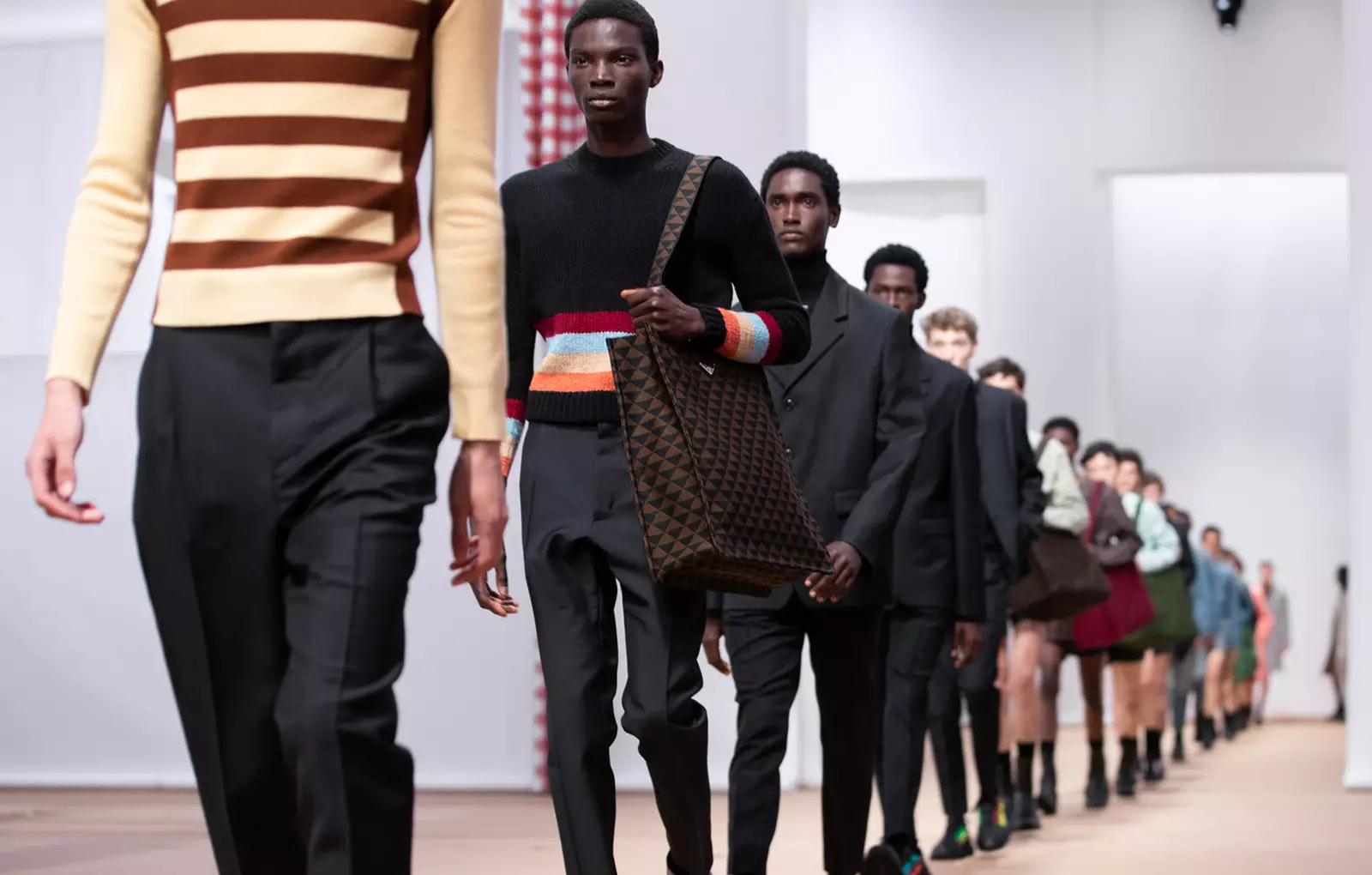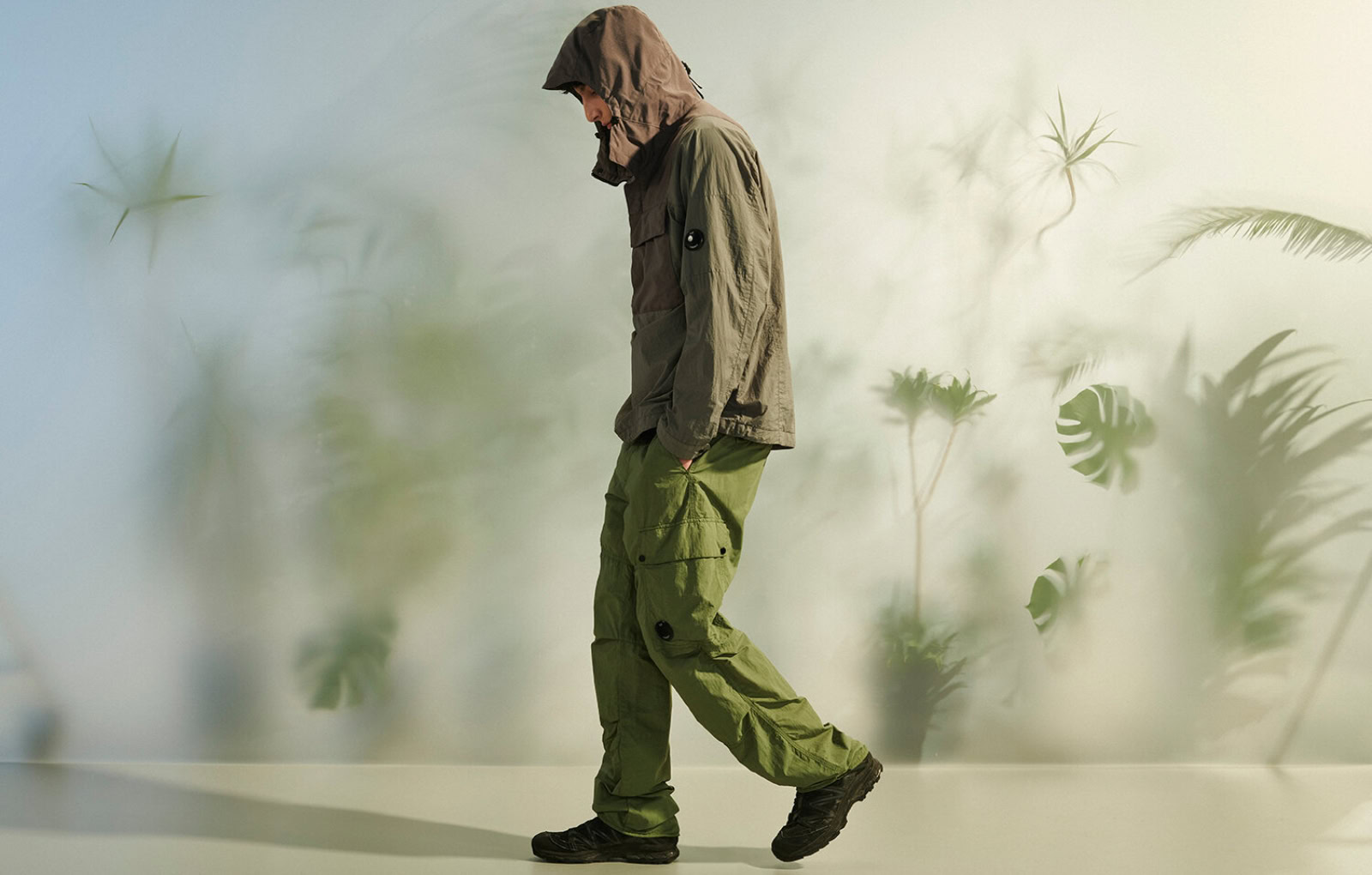It’s difficult to recall a time when, along with a small handful of other countries, Italy didn’t (almost single-handedly) dominate the popular conversation surrounding European fashion. With an ironclad heritage in craft, classical art forms and a starring role in the emergence of the Renaissance; the country has long been home to many of the world’s most influential designers.
RELATED: The Best Polo Shirts For A Wardrobe That’s All Killer & No Filler
In the 21st century, that influence has never felt keener – evident in the sheer number of powerhouse Italian menswear brands; almost always helmed by designers who have cut their teeth in the hallowed proving grounds of Milan, Florence, Rome, Naples and beyond. Many of these labels have been around for more than a century.
Neophytes are quick to assume that the tradition of Italian menswear revolves around all things sartorial, and while that’s certainly true – to a degree – our approved list (consisting of no less than 17 eminent Italian men’s clothing brands) handily illustrates the divergent styles at play in Italy’s industry. From century-old luxury houses to those labels who are rehabilitating the ‘Made In Italy’ movement, here are all the Italian menswear brands we rate right now – each deserving of a space in your wardrobe so you can dial in an effortless style on demand with the kind of super luxe aesthetic synonymous with the Italian style.
See below for our picks of the best Italian menswear brands, from heavy hitters like Gucci and Prada to lesser-known favourites like Tod’s and the relatively younger Boglioli.
Jump To
Gucci

Irrefutably one of the most powerful names in capital-f fashion today, Gucci is less a menswear brand than a full-blown all-points luxury Italian fashion house: delighting well-heeled and (would be well-heeled) shoppers with its provocative handbags, accessories, and licensed fragrances.
Since its establishment in 1921, the Italian luxury brand has managed the impressive feat of keeping pace with the times in every decade: thanks to its popularity among the Jet Set, 1980s emcees and a host of other fashionable subcultures besides.
Of late, the brand has been subjected to even more scrutiny than usual (due in large part to the sudden departure of much-loved Creative Director Alessandro Michele) but for shoppers, there’s plenty of forward momentum. For a crash course in the house’s current, delightfully jaunty aesthetic: we recommend a closer look at the ‘HA HA HA’ capsule, designed in partnership with Harry Styles.
Notable personnel: Alessandro Michele; Tom Ford; Maurizio Gucci
Signature items: Men’s horsebit loafers; Horsebit ‘1955’ shoulder bag
Brunello Cucinelli

With an empire of lifestyle goods to rival even Ralph Lauren, Brunello Cucinelli is an Italian brand that is as much about sheer force of personality as it is handspun cashmere. Headquartered in the Perugian town of Solomeo, it is a holistic extension of Cucinelli himself; whose benevolent, almost Aurelian approach to luxury has spawned an array of products ranging from soft tailoring to homewares and even red wine.
On the menswear front, the Spring 2023 collection is pretty much business as usual: swaddled in vestments of cashmere, linen and silk – all ‘noble’ fibres – in a palette of colours that is exactly 85 percent neutral. Serene and rustic, this is Italian fashion for the latter-day patrician (think ‘stealth wealth’ with a sunnier disposition).
Notable personnel: Brunello Cucinelli; Camilla and Carolina Cucinelli; Alessio Piastrelli
Signature items: Quilted shell down gilet; Cashmere blend rollneck sweater
RELATED: Brunello Cucinelli, King Of Cashmere, Will Begin Selling His Own Red Wine In 2024
Stone Island

Founded in Modena in the early 1980s, Stone Island was – for a good long decade – what fashion insiders would call a ‘IYKYK’ label: offering extremely hardy performance outerwear, from the mind of ‘garment engineer’ Massimo Osti. The brand’s founder is given that sobriquet in light of his innovative manufacturing processes.
Through Stone Island, Osti popularised a range of textiles like steel-bonded cotton and ‘Technowool’, applying these to athletic clothing that was embraced early on by Italian lovers of football ‘casual’ style. Today, the brand is a wholly owned subsidiary of Moncler and remains extremely popular in streetwear culture at large.
Notable personnel: Massimo Osti; Carlo Rivetti
Signature items: ‘61720’ crewneck sweatshirt; ‘David Light-TC’ jacket
Boglioli

A brand that figured prominently in the ‘hashtag menswear’ era of the early 2010s, Boglioli has managed to maintain its street cred with lovers of casual tailoring over the years – propounding an aesthetic that’s perfect for Australia’s balmy coastal climate.
Perfect for those who aspire to the dishevelled elegance of, say, Ernest Hemingway or The Great Beauty protagonist Jep Gamberdella, Boglioli’s signature offering is its ‘K Jacket’: a range of completely unstructured sportcoats (often made entirely from cashmere) that have been garment-dyed for a cosy, lived-in look.
Notable personnel: Davide Marello; Giovanni Mannucci
Signature items: Deconstructed ‘K-Jacket’ sportcoats; Cotton/viscose shirting
Brioni

Widely known for clothing Pierce Brosnan during his tenure as James Bond, Brioni has been an essential player in the Italian menswear industry since the mid-20th century. The brand introduced numerous innovations that revolutionised the suitmaking process, such as trunk shows and a vertically integrated production facility.
Still headquartered in Rome today, the house’s classic and gently sculpted style of tailoring has now broadened to include ready-to-wear menswear that feels right at home alongside the output of brands like Loro Piana and Berluti, trafficking in a ‘stealth wealth’ aesthetic that relies on decadent fabrics and striking proportions.
Notable personnel: Nobert Stumpfl; Jude and Raff Law; Brad Pitt
Signature items: ‘Milano’ virgin wool and silk overcoat; ‘Brunico’ suit in midnight blue wool/silk blend
Diesel

Founded by billionaire fashion tycoon Renzo Rosso in 1978 – originally, as a denim brand – Diesel gained widespread popularity in the early 1990s with its on-the-pulse casualwear and edgy advertising campaigns. Whilst not strictly a menswear label, it has always been a popular choice for lovers of subversive fashions.
Since late 2020, the brand has been led by Artistic Director Glenn Martens – the Belgian designer best known for his tenure at Y/Project, who is now looking to revolutionise the status of Diesel denim by bringing it in a big way into the context of couture.
Notable personnel: Glenn Martens; Renzo Rosso
Signature items: Tapered ‘Krooley’ Joggjeans; ‘D-Viker’ straight jeans
Loro Piana

An Italian menswear brand so influential that one of its signature footwear styles has spawned its own cult of personality, Loro Piana – fully acquired by LVMH group in 2013 – is invariably revered as the God-King of cashmere in ultra-luxe fashion.
Equally acclaimed for its longstanding commitment to the development of innovative new textiles (à la Lotus Flower), the brand follows a similar stratagem to Brioni and Brunello Cucinelli when designing clothes: favouring ready-to-wear collections that combine the best fabrication that money can buy with an aesthetic that might best be described as ‘the only Cheval Blanc resort you can wear’. The brand also offers a range of category-specific collections, centering on resortwear and hyper-luxurious knits.
Notable personnel: Pier Luigi Loro Piana; Antoine Arnault; The Gstaad Guy
Signature items: ‘Snow Wander’ mock-neck sweater; ‘Open Walk’ suede loafers
Bottega Veneta

Originally conceived as an atelier for leather goods in 1966, Bottega Veneta garnered a cult-like reputation in the early 2000s for its low-profile ready-to-wear clothing and intricate handbag designs. Helmed for over 17 years by Creative Director Tomas Maier, of late the brand has experienced an unprecedented surge in popularity – in large part due to the almost universally revered work of British designer Daniel Lee.
Even following Lee’s recent departure for Burberry, the driving ethos at the heart of Bottega remains: as seen in the simple, form-driven designs of Mathieu Blazy (who, following a sterling career at Céline and Maison Martin Margiela, debuted his first collection for the house in August).
Notable personnel: Tomas Maier; Daniel Lee; Matthieu Blazy
Signature items: Classic ‘Intrecciato’ duffle; Leather jacket with curved sleeves
Prada

Founded in Milan in the early part of the 20th century, few brands are as synonymous with the cerebral school of Italian menswear brands as Prada. Under the dynamic leadership of Miuccia Prada – the eponymous founder’s granddaughter – the brand has achieved broad international recognition, with stores in over 70 countries and a roster of diffusion labels including Miu Miu and the technical sportswear label, Prada Linea Rossa – all fashion juggernauts in their own right.
After its origins as a high-end leather goods shop, it didn’t take long before Prada became the official supplier of livery and court clothing to the Italian royal family, which built a reputation that was highly sought by both Italian men and women.
In a relatively unconventional development for the industry, since mid-2020 Miuccia has also shared creative control over the label with award-winning Belgian designer Raf Simons, who quit his own label earlier in November to oversee Prada’s menswear collections full-time.
Notable personnel: Miuccia Prada; Raf Simons
Signature items: ‘Re-Nylon’ shirts; ‘Cloudbust Thunder’ sneakers
Versace

Gaudy to some yet glamorous to many, Versace is the brand that – for many fashionistos – signalled their first brush with the world of high-end Italian fashion. Founded in 1978 by Gianni Versace, the Milanese brand has a uniquely hedonistic house style: with many of its collections (including the menswear) typified by dazzling colours, kaleidoscopic prints and the use of mythological Greek imagery – notably, the brand’s iconic Medusa logo.
Following her brother Gianni’s murder in 1997, Donatella Versace took over the mantle of Creative Director and has since become synonymous with the brand. Her outrageous runway shows and dressing of numerous Hollywood celebs (i.e. Jennifer Lopez) has transformed Versace into a byword for luxury in the American psyche – a phenomenon that continues to this day, through the brand’s popularity with rap groups like Migos.
Notable personnel: Donatella Versace; Gianni Versace
Signature items: Barocco 660 silk shirt; ‘I ♡ Baroque’ bathrobe
Ermenegildo Zegna

Better known to lovers of classic Italian menswear as a repository for the most beautiful suiting fabrics in the world, Ermenegildo Zegna – often shortened simply to Zegna – began life as a woolens mill in the Northern Italian province of Biella. Like a number of venerable old houses founded just after the turn of the 20th century, Zegna’s secret to longevity lies in how it has evolved its core aesthetic (i.e. elegant sartorial clothing, grounded in the traditions of tailoring) with each passing decade.
In recent years, under the stewardship of Artistic Director Alessandro Sartori, the brand has made itself essential to a new and exceedingly diverse audience: as a result of strategic partnerships with everybody from Jerry Lorenzo to football club, Real Madrid; and the increasingly sportif manner in which it has reimagined tailoring for a post suit-and-tie generation.
Notable personnel: Gildo Zegna; Alessandro Sartori; Domenico De Sole
Signature items: Camel hoodie in Oasi cashmere; Blazer in ‘Trofeo’ wool/cashmere
Tod’s

Established in the Central Italian region of Marche in 1920, Tod’s was for much of the latter half of the 20th century synonymous with footwear. The brand garnered widespread popularity for the ‘Gommino’ – its archetypal driving shoe, made (beginning in the 1970s) in a rich array of suedes, nubucks and pebble grain leathers.
Since then, the brand has expanded its oeuvre to include leather goods and even an entire ready-to-wear lineup – with the menswear particularly inspired by outdoor performance clothing and the active lifestyle of the Civitanovesi. Most recently, the brand has collaborated with Moncler Genius: working alongside Palm Angels Creative Director Francesco Ragazzi to reimagine a number of iconic Tod’s footwear styles.
Notable personnel: Diego Della Valle; Walter Chiapponi
Signature items: ‘Gommino’ driving shoes in suede; Large ‘Di’ bag in leather
C.P. Company

Another influential label from the mind of Stone Island founder Massimo Osti, C.P. Company actually predates the existence of the former brand – having been founded in 1971. The techwear label’s core specialties are much the same as Stone Island’s, albeit with a healthy dose of dystopian aesthetics (visible in key pieces like the Shell-R goggle jacket).
Whilst expensive, the brand remains fairly priced for the amount of R&D poured into each collection’s development. In typical Osti fashion, there are over a dozen proprietary fabrics for lovers of technical Italian menswear brands to explore: including multiple treatments of recycled nylon, batik-style broadcloths and ‘GDP’ – C.P. company’s answer to multifilament performance cloths.
Notable personnel: Massimo Osti; Lorenzo Osti
Signature items: ‘Goggle’ jackets; ‘Metropolis Series’ A.A.C. field jacket
Valentino

Propelled along for over 50 years by the magnetic charisma and opulent design chops of ‘Fashion’s Emperor’, Valentino is the preeminent couture house in Italy – noted for its lavish runway presentations and sumptuous dressmaking.
Although Valentino Garavani retired from his role as overarching Creative Director in 2007, the maison that bears his name remains in extremely capable hands. This is down to the work of award-winning designer (and favoured disciple) Pierpaolo Piccioli, who has ensured Valentino remains inexplicably tied to the zeitgeist through his original work on the ‘Rockstud’ and ‘Toile Iconographe’ collections.
Notable personnel: Valentino Garavani; Pierpaolo Piccioli; Giancarlo Giammetti
Signature items: Locò crossbody bag; ‘Roman Stud’ cotton/wool overshirt
Fendi

Much like Bottega Veneta or Salvatore Ferragamo, Fendi’s origins can be traced back to the specialist ateliers of the early 20th century. Established in 1925 as a furrier, the brand is now instantly recognisable to millions of fashion consumers around the world – courtesy of the brand’s double-F (or ‘Zucca’) logo.
Throughout the 1960s, the brand was a hotbed of experimentation for legendary designer Karl Lagerfeld who – despite later becoming synonymous with Chanel – would go on to helm Fendi’s collections until his eventual death in 2019.
Unlike a number of historically family-owned houses, the Fendis still exert considerable influence over the operational and creative domains of their namesake label (today LVMH holds a controlling stake of 74.5 percent). Although ex-Dior lead Kim Jones is nominally in charge of the Fendi womenswear collections, third-generation family member Silvia Venturini is the mastermind behind many of the label’s iconic accessories – including such notable designs as the ‘Peakaboo’ and ‘Baguette’. And yes, she’s also in charge of menswear.
Notable personnel: Silvia Venturini Fendi; Kim Jones; Delfina Delettrez Fendi
Signature items: ‘Peekabboo ISeeU’ mini; ‘Fendi Roma Capsule’ blouson
Aspesi

Founded in 1969, Aspesi was among the first Italian menswear brands to kickstart the ‘technical sportswear’ revolution. Utilising traditional fabrication techniques in service of hyper-modern applications – also a running theme over at C.P. Company – the company achieved a wide international audience after tapping Peter Lindbergh to photograph its Spring/Summer 1988 campaign.
Decades later, the foundation of Aspesi remains more or less intact. Transitional layers detailed with satisfying functional elements are a signature; while the colour palette favoured by Creative Director Lawrence Steel (who was a consultant at the brand between 2004-2017) is overwhelmingly neutral. So much the better to highlight all of Aspesi’s interesting work with synthetic fabrics.
Notable personnel: Alberto Aspesi; Lawrence Steel
Signature items: ‘Re-shirt’ nylon jacket; Nylon/taffeta raincoat
Giorgio Armani

Arguably the most ubiquitous of Italian menswear brands to make our list, the words ‘Giorgio Armani’ are synonymous not just with fashion’s oldest working super-designer, but an entire empire of businesses which bear his name. From Emporio Armani to Armani beauty, and even a duet of hotels in Milan and Dubai; there is no corner of the luxury goods universe in which Maestro Giorgio does not reside.
Much like other Italian brands with a sartorial inclination, such as Zegna and Cerruti (of which Armani himself is an alumnus) the emphasis here is on cool, almost surgically sharp tailoring – reinforced with monochrome accessories that live in a universe heat-shielded from trends. There’s a reason that so much of the clothing in Paul Schrader’s 1980 neo-noir American Gigolo feels like it would work today: because of Armani’s own preference for stripping all the uptightness out of what we think of as ‘fusty’ menswear staples.
Notable personnel: Giorgio Armani; Sergio Galeotti
Signature items: Single-breasted blazer with diagonal motif; ‘Icon’ double-breasted trench coat
